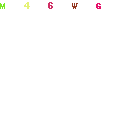 Six thousand years ago, astronaut/pioneers from the planet Nibiru dictated Enumaelish – the Creation Epic – to the Sumerians (folk who dwelt ten thousand years ago in what is now modern Iraq). The Sumerians wrote down on clay tablets what the Nibirans told them about how our solar system formed. The Creation Epic says Solaris, our Sun, (then a solitary star), first created a planet the Nibiran’s called Tiamat. Tiamat was the proto-Earth. It orbited Solaris counterclockwise.
Six thousand years ago, astronaut/pioneers from the planet Nibiru dictated Enumaelish – the Creation Epic – to the Sumerians (folk who dwelt ten thousand years ago in what is now modern Iraq). The Sumerians wrote down on clay tablets what the Nibirans told them about how our solar system formed. The Creation Epic says Solaris, our Sun, (then a solitary star), first created a planet the Nibiran’s called Tiamat. Tiamat was the proto-Earth. It orbited Solaris counterclockwise.
Next, Solaris, called Apsu, created Mercury and propelled Mercury with water and gold to Tiamat. Planet-pairs formed: Venus with Mars, Jupiter with Saturn and Uranus with Neptune. These planetary partners, say the Enuma elish, orbited the Sun counterclockwise, the same direction Tiamat followed.
Tiamat lacked a partner-planet, but one of her moons, Kingu, enlarged. Kingu prepared to partner with Tiamat. Then Kingu could orbit the Sun, rather than Tiamat. But, four billion years ago, before Kingu could attain planetary orbit around Solaris, Nibiru invaded the Solar System clockwise.
The gravitational pull of Nibiru pulled a piece of Neptune into space. That’s how Neptune’s moon, Triton, formed. Triton, unlike other moons in the System, orbits its planet clockwise.
As Nibiru pierced our Solar System, Nibiru lost three of its moons, but while passing Uranus attracted and kept in its orbit four moons from Uranus. The tearing away of the four moons by Nibiru from Uranus also tilted Uranus’ existing orbit in our solar system.
Nibiru pulled Gaga, Saturn’s largest moon, into clockwise orbit (between Neptune and Uranus). We call Gaga Pluto.
On one of Nibiru’s orbital perigees around Solaris (four billion years ago), one of Nibiru’s moons slammed into Tiamat and gouged out huge chunks. These chunks of Tiamat careened into space. The huge gouge in Tiamat where Nibiru’s moon hit is now the Pacific Basin. The chunks of Tiamat that exploded into space are now asteroids and comets. What’s left of Tiamat is our present Earth.
In the Pacific, waters and life-seeds of Nibiru and Tiamat evolved together. Nibiru’s gravity took with it all Tiamat’s moons except Kingu, the moon which, just before Nibiru invaded, readied itself to claim an orbit around Solaris.
Nibiru’s invasion left Kingu lifelessly orbiting Earth, rather than Solaris. Tiamat’s other moons became satellites of Nibiru.
Nibiru stabilized into a clockwise orbit, equal to 3,600 orbits of Earth around the Sun, until 10, 900 B.C., when Nibiru had arrived earlier in all this, caused by an increasing drift from the the magnetic pulls of Solaris of Uranus, Uranus’ gravity sped up Nibiru’s orbit. As a result of this close encounter between Nibiru and Uranus, one of Nibiru’s moons (Miranda), was captured by Uranus as claiming it for itself, as Nibiru and Uranus continued to pull at each other.
From 10,000 B.C.E. on, Nibiru’s revolution sped to 3450 Earth years, making makes Nibiru’s next return around 2900 A.D., rather than 2012 as predicated on the earlier 3600-year orbit [Sitchin, Z., 2007, The End of Days, pages 315 – 317].
